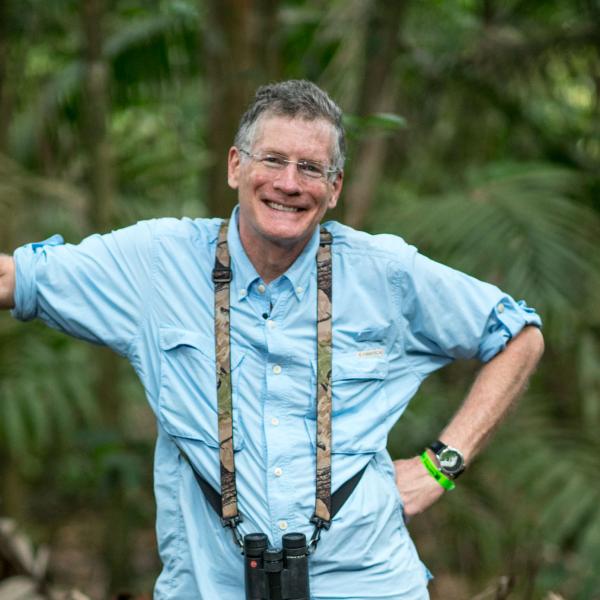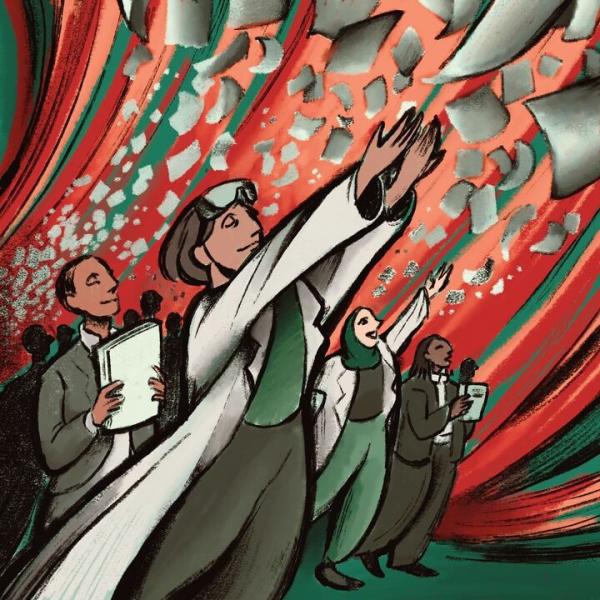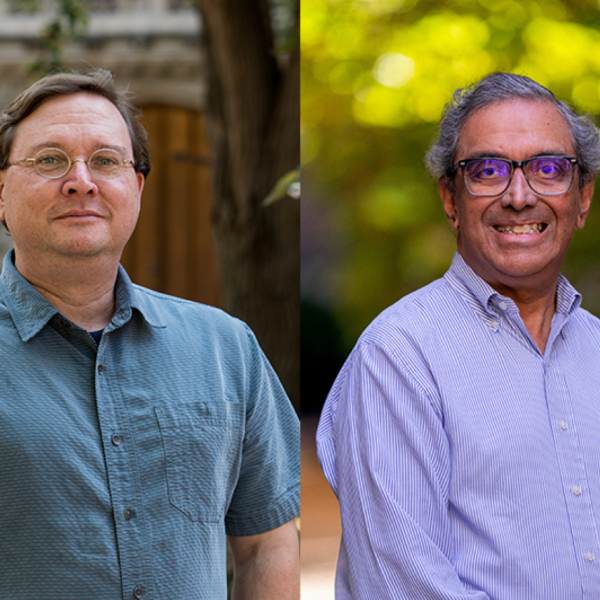Sophia Hayes, professor of chemistry, is part of a growing movement at Washington University to offer students essential training in science communication.

It was day one in a first-year seminar, and Sophia Hayes, professor of chemistry in Arts & Sciences at Washington University in St. Louis, gave her eager and energetic group of students an unexpected preview of their semester. “I know this looks and feels like a chemistry class, but it's so much more than that,” Hayes said. “I want you to learn the language of chemistry and be able to translate that to others – to people who aren't chemistry majors, who aren't scientists, and maybe find a way to capture their interest.”
Through years of experience and recent prominent public appearances, Hayes has honed her ability to clearly present scientific topics to non-scientists. She now brings these skills to the classroom, training future researchers to meet people where they are with clear language and real-world connections.
Over the past few years, Hayes has had the opportunity to put her approach to science communication into practice. In December 2019, she testified before the U.S. House of Representatives Committee on Science, Space, and Technology on the topic of helium and its potential looming scarcity. The same year, she gave a TEDx talk on combating climate change. On these very public occasions, Hayes knew she would need to craft a compelling story and deliver it in a way that would appeal to her audience.
For both her Congressional testimony and her TEDx talk, Hayes relied on her background in science, extensive preparation, and her strong conviction about her subject matter to deliver a clear message and instill a sense of urgency in her audience. “I was trying to meet people on their terms, to get them to care deeply, as I did, about these issues,” Hayes said. “Focusing on how science benefits everyone is a better position from which to inform, educate, and perhaps even advocate.”
Tips from a science communications expert
In order to effectively inform the public or influence policy, Hayes emphasizes that scientists need to move beyond their training, which traditionally values rigorous exactitude when it comes to sharing results and favors carefully qualified claims over absolute statements. For audiences who don’t have science training, that kind of nuance can sound like uncertainty or even guesswork.
“A major challenge is to ‘unlearn’ some of the key ways we scientists communicate amongst ourselves. We learn how to be precise in what we say in STEM fields because we can be challenged on anything that is even mildly inaccurate,” Hayes explained. “But, when speaking to the public, while being accurate – yes, always – there should be an effort to communicate with intention and to lose some of the precision.”
Light moments amidst heavier topics are another secret to Hayes’ success as a science communicator. “A little humor helps,” Hayes added. “It’s important not to take yourself too seriously. Also, I was told that if I could get Congress to laugh, then I’d know the testimony was going well.” For Hayes, a balance between confidence and relatability seems to be the sweet spot for effective science communication.
“I encourage students to tell a good story, first and foremost, and to use analogies when possible,” Hayes said. “Facts and figures are great, but people will care about something more if they can connect to it on an emotional level, for example feeling frustration about a lack of helium for an important kids’ party or worrying about climate change. Finding common ground with your audience requires back-and-forth communication, empathy, and careful thought.”
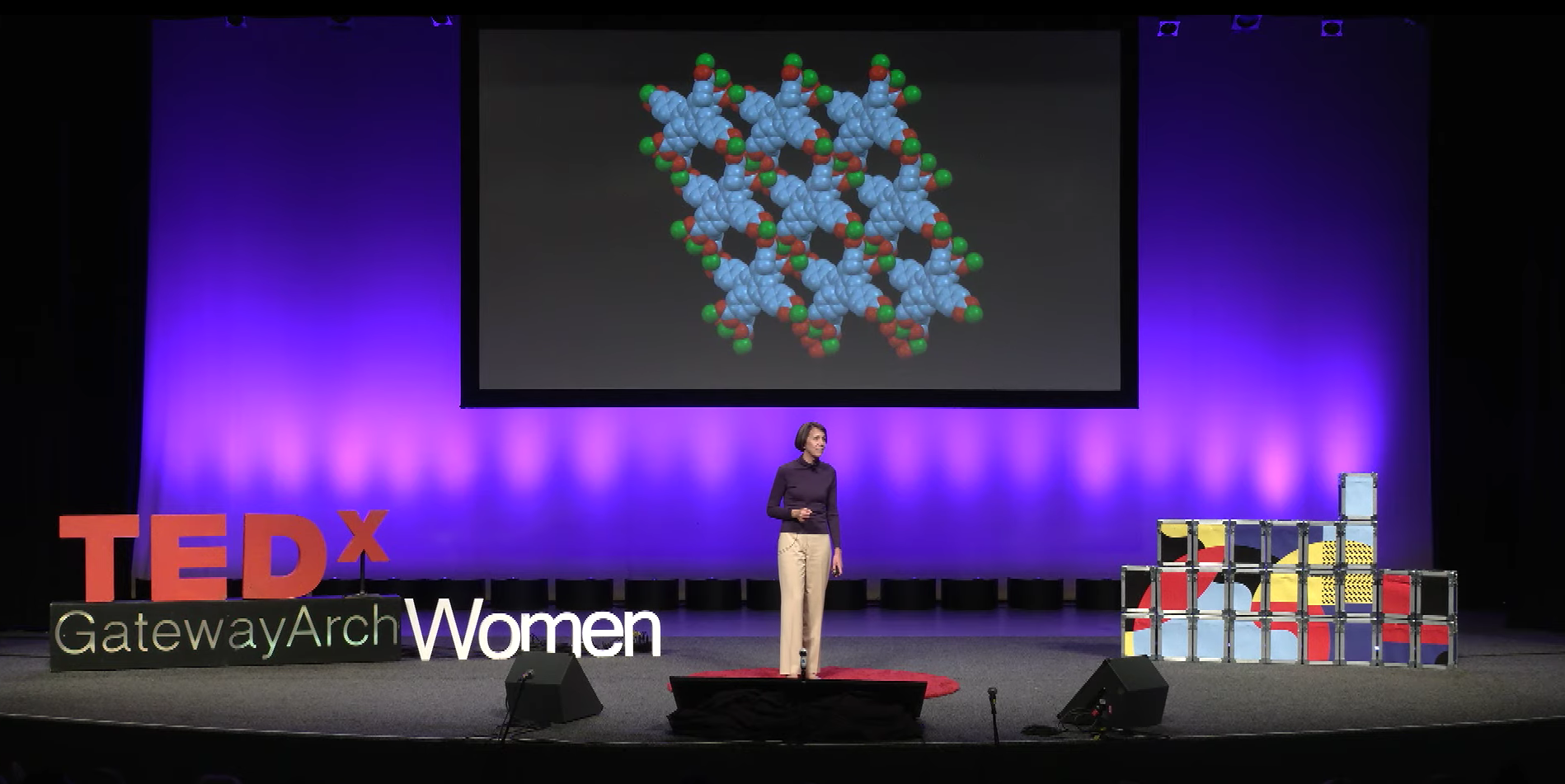
Graduate student training
Hayes’ experiences have influenced how she thinks about the type of training scientists need. Beyond specialized technical training in STEM, students also need opportunities to build skills in multiple facets of science communication – how can young scientists connect with other professionals in their own and related fields, as well as the public? How can scientists best leverage the communications channels available to them to share their expertise?
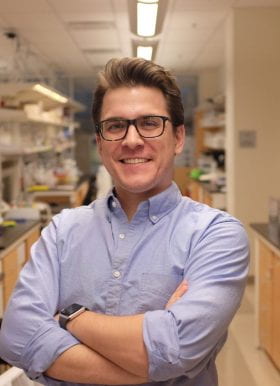
A growing cohort of students and researchers at Washington University are concerned with these questions, including third-year graduate student Kevin Blake. Blake is director of science communication for ProSPER, a graduate student group dedicated to promoting science policy, education, and research.
“Given how important science communication skills are, regardless of career path, it’s shocking how little attention these have historically received during graduate education,” Blake said. “Fortunately, that appears to be changing for the better.”
Blake points to numerous outlets on campus for graduate students who seek to gain skill and experience in science communication, including the course “Communicating Science,” a Science Communication Credential, and the ProSPER blog. The blog offers graduate students a platform to write about a topic they’re interested in, have their article go through an editorial process, and build a portfolio of published work. Such experience is especially helpful for those pursuing a career in science communication, but it also provides value to scientists without that goal.
“Strong communication skills are essential for any scientist. You could have an interesting, well-executed, technically rigorous report, but if it’s poorly organized and difficult to read people are going to engage with it less,” Blake said. “Best case scenario: you’ve made some poor reader unnecessarily spend an extra 10-15 minutes struggling to understand what you mean. Worst-case scenario: someone misinterprets your conclusions, or stops reading it altogether.”
Hayes describes her own training as a graduate student and later a postdoc in collaborative research environments as not only formative but fortuitous. From the start of her career, she had to communicate chemistry concepts to physicists, engineers, and materials scientists. Stretching her multilingual muscles early on provided a valuable foundation to expand her range of audiences as she became a more established expert. Hayes seeks to pass this gift along to her students by incorporating science communication practice into the courses she teaches.
The undergraduate communicator
Hayes brings science communications topics into the conversation early on in her students’ educational path, such as in her first-year course “Applications in Chemistry” last fall. “As a STEM student, I know that communication is a critical part of expressing my ideas to the broad scientific community,” said first-year student Paige Kirschner, who took the course. “Professor Hayes' class gave me an opportunity to not only practice and develop these skills, but to share my thoughts on current topics in chemistry and interact with professionals in the field.”
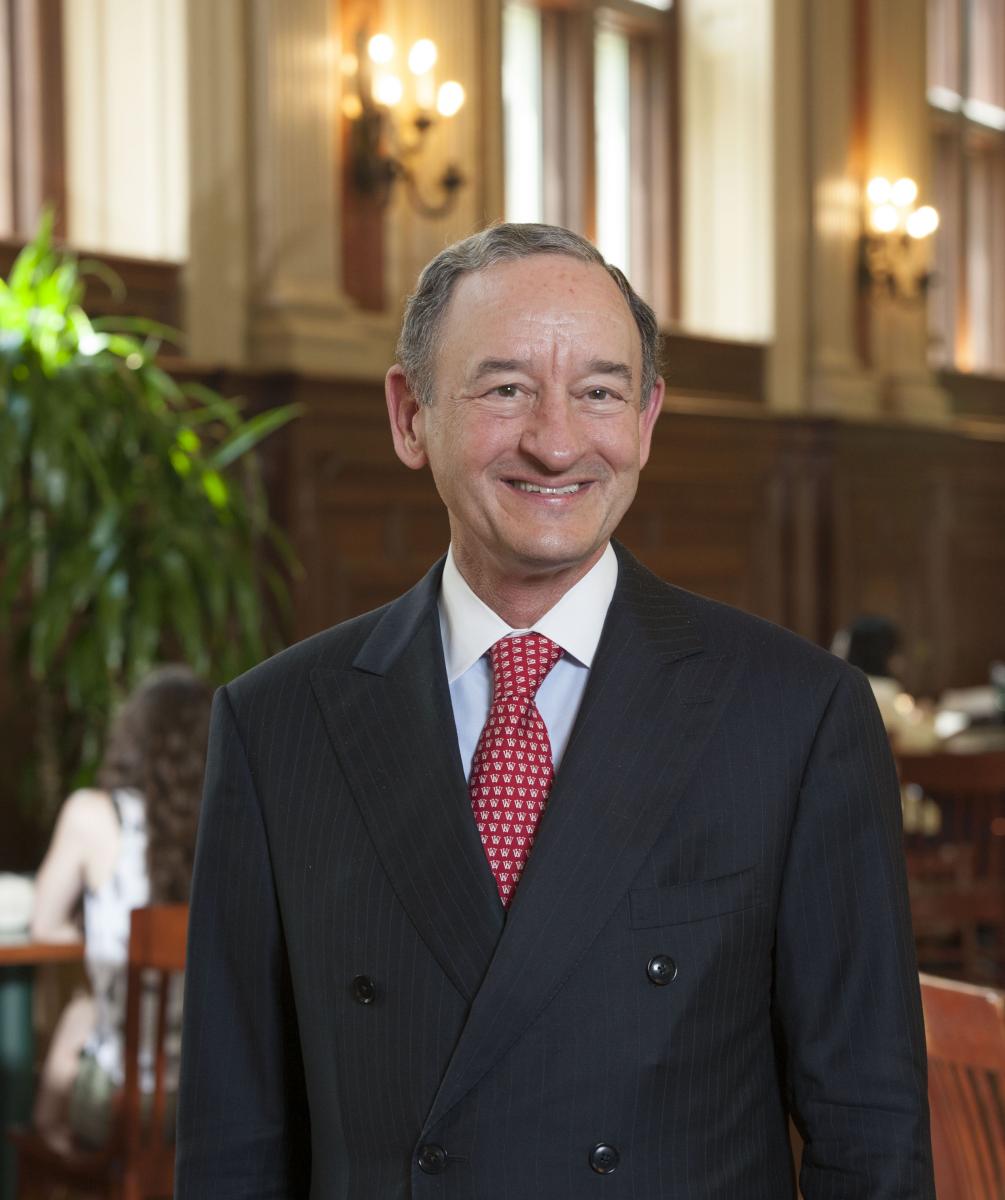
The impressive slate of guest lecturers in “Applications in Chemistry” included Holden Thorp, editor-in-chief of the Science family of journals; William Tolman, editor-in-chief of the American Chemical Society journal Inorganic Chemistry; chancellor emeritus Mark Wrighton; and other scientists working in a range of subfields of chemistry.
“Sophia Hayes is an outstanding scholar and educator as well as an exemplary communicator and ambassador for science and its benefits for society,” Wrighton said. “I had the opportunity to experience this firsthand by participating in her class last fall. All her students were prepared with impressive questions, and Sophia followed up by teaching them how to communicate the key elements of the class via social media. It is inspiring to have such outstanding faculty at Washington University.”
As Wrighton observed, asking questions is an integral part of empathetic communication and, notably, requires both confidence and curiosity – attributes that Hayes and other professors aim to cultivate among their students.
Opportunities abound
With all the demands on readers’ attention – including competing news sources and the disruptive noise of misinformation – clear, concise, and correct messaging is more important than it’s ever been. Alongside Hayes’ courses, a number of avenues are available to WashU students with an interest in gaining essential skills in science communication.
Professors who share Hayes’ commitment to science communication include Elizabeth Haswell in biology, who hosts The Taproot podcast, and Bronwen Konecky in Earth and planetary sciences and Krista Milich in anthropology, who incorporate science communication into their courses. At Tyson Research Center, Suzanne Loui, lecturer in environmental humanities, mentors undergraduate fellows in science communication.
Thanks to all of these opportunities, as well as the strong interest of her students, Hayes sees a bright future for science communicators. Just this week, two WashU graduate students working in the Center for Engineering MechanoBiology were named seminfinalists in the 2021 Reach Out Science Slam Communication Challenge, a national science communication competition sponsored by the National Science Foundation.
“I’m more optimistic than ever about science communication. We have a real opportunity because of the increased interest in science we’re seeing right now,” Hayes said. “I’ve seen new engagement, especially by young people, in topics related to COVID and biochemistry, climate change and the environment, and on other fronts, such as water quality, agriculture, and food production. The public appears to be more engaged, and scientists are also more open to being trained on how to communicate better.”

